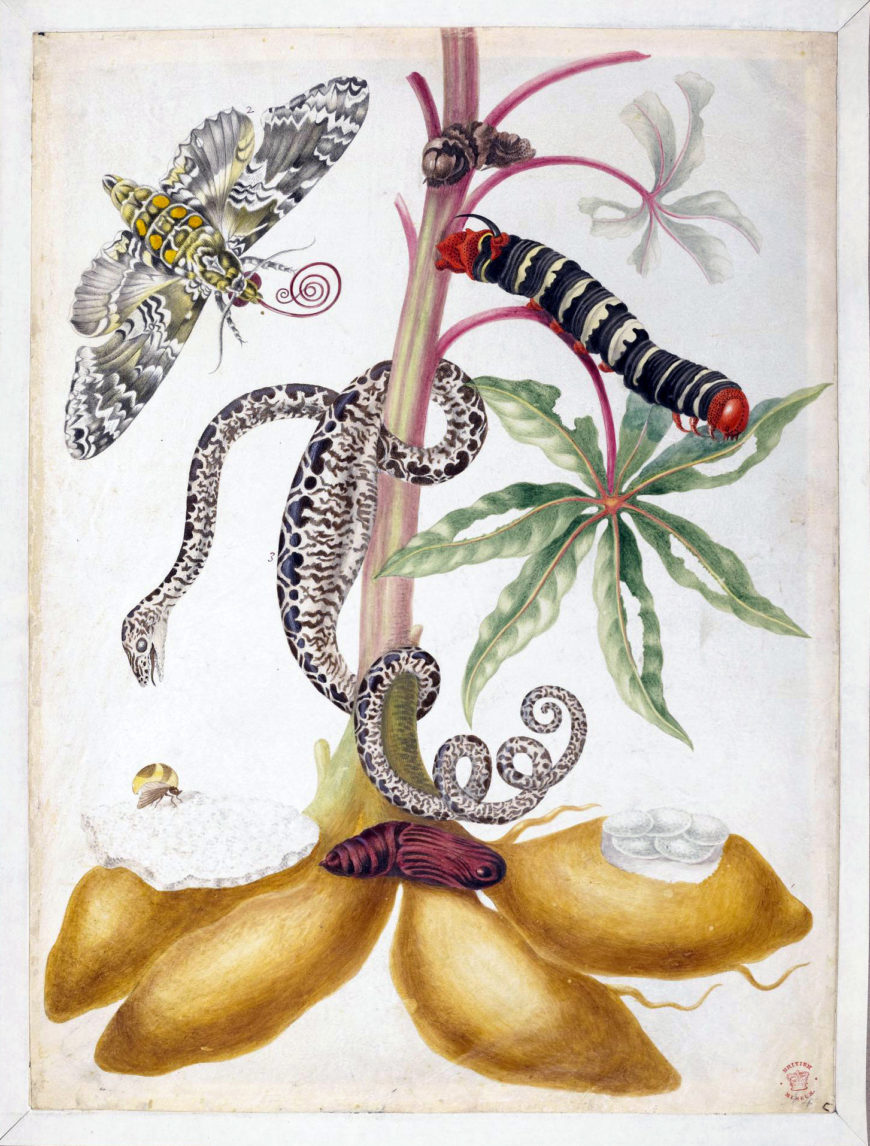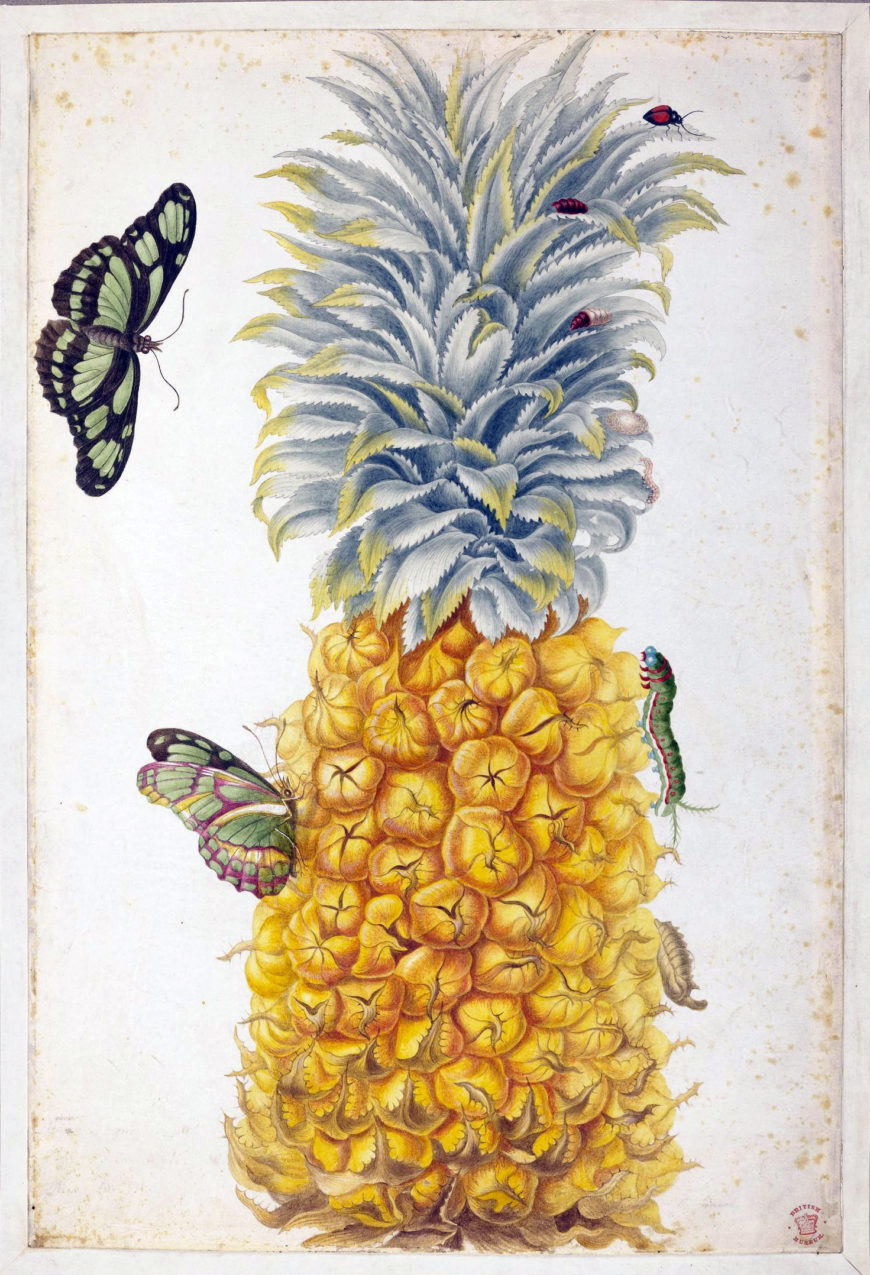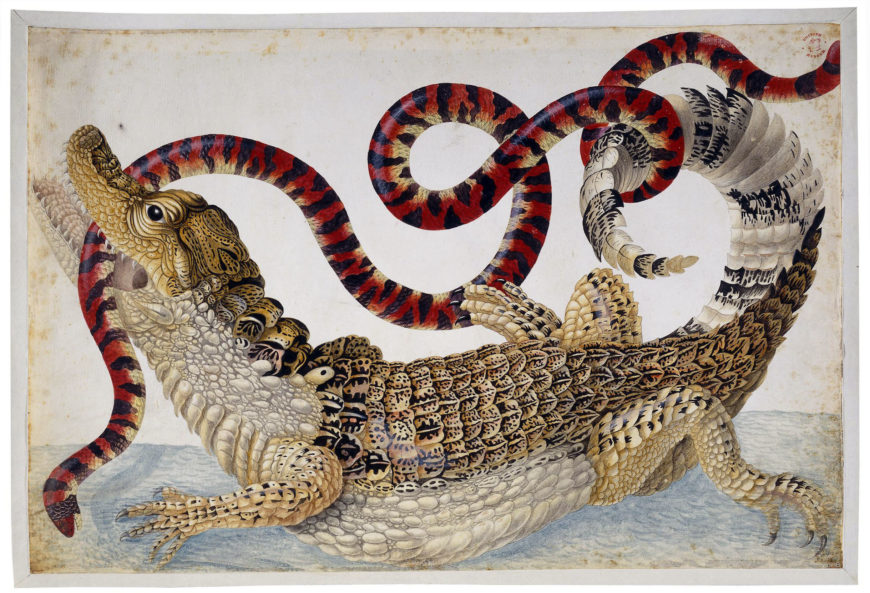Maria Sibylla Merian (1647–1717) came from an artistic family. Her father and two half- brothers were printmakers who successively ran a publishing house of international renown in Frankfurt, and her step-father and husband were painters. She spent major parts of her life in Frankfurt, Nuremberg, and Amsterdam and specialized in painting plants, animals and insects on vellum. In 1699 she travelled with her younger daughter to Surinam, a Dutch colony in South America, where she made extensive notes and sketches, and collected dried plants and animals preserved in alcohol. She returned to Amsterdam in 1701, where in 1705 she published her work on Surinamese insects, the first scientific work produced about the colony.

Maria Sibylla Merian, The life cycle of a moth, with a snake, c. 1701–1705, from, “Merian’s Drawings of Surinam Insects &c,” watercolor and bodycolor on velum, 38.1.x 28.5 cm (© The Trustees of the British Museum)
Merian was an unconventional figure in the late seventeenth century. Few women could have achieved in art and science what she did at that time. For her period, her work is scientifically accurate and she is considered by modern scholars to be one of the founders of entomology, the study of insects.

Maria Sibylla Merian, Pineapple with examples of a caterpillar, chrysalises, two butterflies and a beetle, depicting the life cycles of the insects, c. 1701–1705, from, “Merian’s Drawings of Surinam Insects &c,” watercolor and bodycolor on velum, 41.5.x 27.9 cm (© The Trustees of the British Museum)
© The Trustees of the British Museum
Additional resources:
T. Rice, Voyages of discovery: three ce (London, Scriptum Editions and the Natural History Museum, 1999)
K. Wettengl (ed.), Maria Sibylla Merian, 1647-171 (Verlag Gerd Hatje, Frankfurt, 1998)


